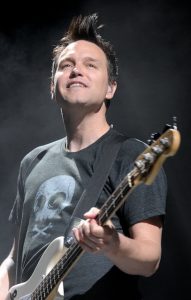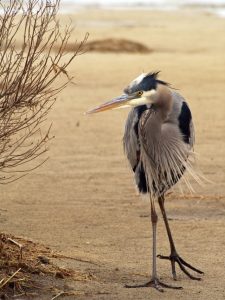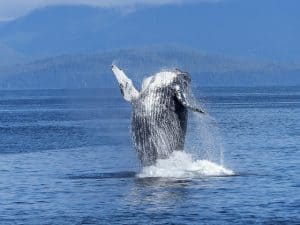
Life in Southern Hemisphere
Antarctica is Earth’s southernmost continent, containing the geographic South Pole. It is situated in the Antarctic region of the Southern Hemisphere, almost entirely south of the Antarctic Circle, and is […]
Antarctica is Earth’s southernmost continent, containing the geographic South Pole. It is situated in the Antarctic region of the Southern Hemisphere, almost entirely south of the Antarctic Circle, and is surrounded by the Southern Ocean. At 14,000,000 square kilometres, it is the fifth-largest continent in area after Asia, Africa, North America, and South America. For comparison, Antarctica is nearly twice the size of Australia. About 98% of Antarctica is covered by ice that averages 1.9 km in thickness, which extends to all but the northernmost reaches of the Antarctic Peninsula.
Antarctica, on average, is the coldest, driest, and windiest continent, and has the highest average elevation of all the continents. Antarctica is considered a desert, with annual precipitation of only 200 mm along the coast and far less inland. The temperature in Antarctica has reached −89.2 °C, though the average for the third quarter.
There are no permanent human residents, but anywhere from 1,000 to 5,000 people reside throughout the year at the research stations scattered across the continent. Organisms native to Antarctica include many types of algae, bacteria, fungi, plants, protista, and certain animals, such as mites, nematodes, penguins, seals and tardigrades. Vegetation, where it occurs, is tundra.
Antarctica is otherworldly, like nothing I’ve ever seen before. Stark, cold, beautiful desolation.
Mark Hoppus
 Although myths and speculation about a Terra Australis date back to antiquity, Antarctica was only first sighted in 1820, by the Russian expedition of Fabian Gottlieb von Bellingshausen and Mikhail Lazarev on Vostok and Mirny, who sighted the Fimbul ice shelf. The continent, however, remained largely neglected for the rest of the 19th century because of its hostile environment, lack of resources, and isolation.
Although myths and speculation about a Terra Australis date back to antiquity, Antarctica was only first sighted in 1820, by the Russian expedition of Fabian Gottlieb von Bellingshausen and Mikhail Lazarev on Vostok and Mirny, who sighted the Fimbul ice shelf. The continent, however, remained largely neglected for the rest of the 19th century because of its hostile environment, lack of resources, and isolation.
Antarctica is a de facto condominium, governed by parties to the Antarctic Treaty System that have consulting status. Twelve countries signed the Antarctic Treaty in 1959, and thirty-eight have signed it since then. The treaty prohibits military activities and mineral mining, prohibits nuclear explosions and nuclear waste disposal, supports scientific research, and protects the continent’s ecozone. Ongoing experiments are conducted by more than 4,000 scientists from many nations.
Aristotle wrote in his book Meteorology about an Antarctic region in c. 350 B.C. Marinus of Tyre reportedly used the name in his unpreserved world map from the 2nd century A.D. The Roman authors Hyginus and Apuleius used for the South Pole the romanized Greek name polus antarcticus, from which derived the Old French pole antartike (modern pôle antarctique) attested in 1270, and from there the Middle English pol antartik in a 1391 technical treatise by Geoffrey Chaucer.
Before acquiring its present geographical connotations, the term was used for other locations that could be defined as “opposite to the north”. For example, the short-lived French colony established in Brazil in the 16th century was called “France Antarctique”.












 “Angels are a light for monks, monks are a light for laymen”. The Orthodox Church measures its health by the quality of its monks and nuns. Orthodox monastics separate themselves from the world in order to pray unceasingly for the world. They do not, in general, have as their primary purpose the running of social services, as is common in Western Christianity,[citation needed] but instead are concerned with attaining theosis, or union with God.
“Angels are a light for monks, monks are a light for laymen”. The Orthodox Church measures its health by the quality of its monks and nuns. Orthodox monastics separate themselves from the world in order to pray unceasingly for the world. They do not, in general, have as their primary purpose the running of social services, as is common in Western Christianity,[citation needed] but instead are concerned with attaining theosis, or union with God.



 Birds have wings which are more or less developed depending on the species; the only known groups without wings are the extinct moas and elephant birds. Wings, which evolved from forelimbs, give most birds the ability to fly, although further speciation has led to some flightless birds, including ratites, penguins, and diverse endemic island species of birds. The digestive and respiratory systems of birds are also uniquely adapted for flight. Some bird species of aquatic environments, particularly the aforementioned flightless penguins, and also members of the duck family, have also evolved for swimming. Birds, specifically Darwin’s finches, played an important part in the inception of Darwin’s theory of evolution by natural selection.
Birds have wings which are more or less developed depending on the species; the only known groups without wings are the extinct moas and elephant birds. Wings, which evolved from forelimbs, give most birds the ability to fly, although further speciation has led to some flightless birds, including ratites, penguins, and diverse endemic island species of birds. The digestive and respiratory systems of birds are also uniquely adapted for flight. Some bird species of aquatic environments, particularly the aforementioned flightless penguins, and also members of the duck family, have also evolved for swimming. Birds, specifically Darwin’s finches, played an important part in the inception of Darwin’s theory of evolution by natural selection.



 For solid objects like human bones and muscles, this added pressure is not much of a problem; but it is a problem for any air-filled spaces like the mouth, ears, paranasal sinuses and lungs. This is because the air in those spaces reduces in volume when under pressure and so does not provide those spaces with support from the higher outside pressure. Even at a depth of 8 ft underwater, an inability to equalize air pressure in the middle ear with outside water pressure can cause pain, and the tympanic membrane can rupture at depths under 10 ft (3 m).
For solid objects like human bones and muscles, this added pressure is not much of a problem; but it is a problem for any air-filled spaces like the mouth, ears, paranasal sinuses and lungs. This is because the air in those spaces reduces in volume when under pressure and so does not provide those spaces with support from the higher outside pressure. Even at a depth of 8 ft underwater, an inability to equalize air pressure in the middle ear with outside water pressure can cause pain, and the tympanic membrane can rupture at depths under 10 ft (3 m).















 Plato founded the Academy in Athens, the first institution of higher learning in Europe. The city of Alexandria in Egypt, established in 330 BCE, became the successor to Athens as the intellectual cradle of Ancient Greece. There, the great Library of Alexandria was built in the 3rd century BCE. European civilizations suffered a collapse of literacy and organization following the fall of Rome in AD 476.
Plato founded the Academy in Athens, the first institution of higher learning in Europe. The city of Alexandria in Egypt, established in 330 BCE, became the successor to Athens as the intellectual cradle of Ancient Greece. There, the great Library of Alexandria was built in the 3rd century BCE. European civilizations suffered a collapse of literacy and organization following the fall of Rome in AD 476.